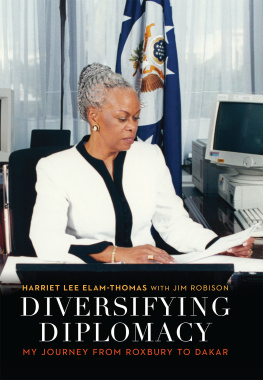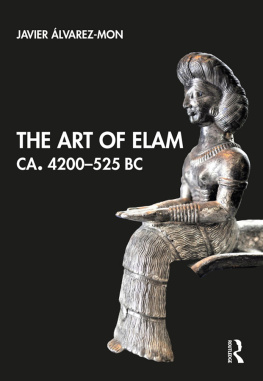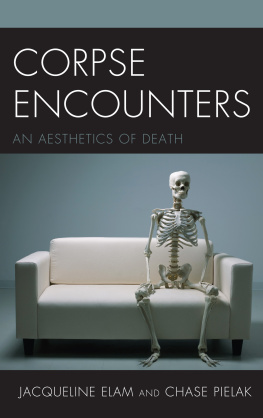FEMINISM BESIDE ITSELF
| FEMINISM | BESIDE ITSELF |
| edited by | Diane Elam |
| and | Robyn Wiegman |
Published in 1995 by
Routledge
29 West 35 Street
New York, NY 10001
Published in Great Britain in 1995 by
Routledge
11 New Fetter Lane
London EC4P 4EE
Copyright 1995 by Routledge
Printed in the United States of America.
Design: David Thorne
All rights reserved. No part of this book may be reprinted or reproduced or utilized in any form or by any electronic, mechanical or other means, now known or hereafter invented, including photo-copying and recording, or in any information storage or retrieval system, without permission in writing from the publishers.
Library of Congress Cataloging-in-Publication Data
Feminism beside itself / edited by Diane Elam and Robyn Wiegman.
p. cm.
Includes bibliographical references and index.
ISBN 0-415-91040-4 (cloth) ISBN 0415910412 (pbk.)
1. Feminism. I. Elam, Diane, 1958. II. Wiegman, Robyn.
| HQ1154.F4435 1995 | 9438174 |
| 305.42dc20 | CIP |
FOR BILL READINGS
Bill Readings death was in the future when Feminism Beside Itself was edited. And although his work does not appear as such here, thinking with Bill made this book possible. Originally, Bills invisible presence had seemed too personal and too general to mention, but when that presence became a real absence, it could no longer go unremarked. We could have never understood in advance what it would mean for Bill to die in a plane crash on October 31, 1994. It seems all too evident now that responsibility and obligation come at times that can not necessarily be anticipated before an event. The radically contingent future, the future that is absolutely surprising as Levinas would say, includes the possibility of deaththe possibility that marks, and remarks, a permanent obligation to the Other that we cannot calculate in advance. In the absence of calculation, what is to come is made possible by thinking together, by placing thought beside itself. And while we will never be able to think with Bill again, we can continue to think beside him, thinking together the futures of feminism.
ACKNOWLEDGMENTS
We express our appreciation to Marie Lessard who helped us prepare the manuscript. Her patience, expertise, and sense of humor were indispensable. This project would also not have been possible without the generous support and encouragement of Maureen MacGrogan at Routledge. The Society for the Study of Narrative first provided us with a forum in which to think about the issues that resulted in this collection, and we thank them for sharing their panel with us at the 1992 New York MLA meeting. Stephen Melville graciously allowed us to appropriate his title. Finally, the Social Sciences and Humanities Council of Canada (SSHRC) and the Qubec Fonds pour la Formation de Chercheurs et lAide la Recherche (FCAR) have provided the financial support that sustained this volume.
A version of Susan Gubars Feminist Misogyny: Mary Wollstonecraft and the Paradox of It Takes One to Know One, appeared in Feminist Studies 20, 3 (1994), pp. 45373, and is reprinted by permission of the publisher. Grateful acknowledgment is made to the Yale Collection of American Literature, Beinecke Rare Book and Manuscript Library for permission to quote from Gertrude Steins The Making of Americans notebooks; to Mountain Press for permission to quote from Irena Klepfiszs Solitary Act, A Few Words in the Mother Tongue (Portland, Oregon: The Eight Mountain Press, 1990), p. 201, 1982 Irena Klepfisz.
Bloomington and Montreal, 1994
CONTINGENCIES
Diane Elam and Robyn Wiegman
If introductory essays to anthologies on feminism carried a surgeon generals warning, this one would read: Subscribing to myths of collaborative editing may be hazardous to your intellectual health. The editors, we must warn you, are divided against themselves. As suggested by the essays gathered here, they find feminist gestures toward unity, collective and otherwise, more politically problematic than they often appear. But by foregrounding disagreement, they make no promise to agree to disagree. The editors want to resist even this attempt at wedded bliss.
Is this simply a reinstatement of radical individualism, a blithe compromise that differences are so difficult one can only stand in antithesis to we, that utopian collective? After all, anyone struggling with feminism these days knows how inescapable is the need to hone our apprehension of differences, and the editors might speak here not simply of the expanding embrace of gender, race, and class but also of those political and psychic differences that cannot be explained by appealing to either bodies or their social locations. However, in resisting the shelter of we as the vehicle for a collective merger, the editors are not heralding a turn to I. To speak for ones self, at least one of them has been known to say, is no less risky a political enterprise. It is similarly impossible to escape the representational and epistemological complexities of an individual claim to know.
They debated with one another why feminisms most elaborate and contentious conversation seemed now to be about its own political and philosophical assumptions, omissions, and oppressive complicities. What did it mean that feminism had become so self-referential? Their discussions turned often to historical explanations, to the way that feminism had become a regular feature of both popular and academic discourses. Perhaps it was precisely this public visibility, someone suggested, that undermined feminisms political identity by integrating into commodity culture the discourses of marginality and dissent that feminism had understood itself historically to be.
But how could you define with any kind of assurance what it is that feminism had understood itself to be? So much of the critical conversation being cited as symptomatic of the anthologys concern for the self-reflective gesture was a debate over this very question. As literary critics, the editors were quick to enfold this debate into those revolving around representation, which any writing of history necessarily engaged. They thus found themselves asking potential contributors to explore the history of feminisms identity along with the identity of its history. That none of these termsfeminism, history, or identityexisted apart from vigorous debates meant that their project would have to foreground its own participation in the anxieties that it hoped to discuss. For this reason, the editors began to consider not only the ways in which feminism had become self-reflective but also why it might want or need to be self-reflective in the first place. And on this, they initially went their separate ways.
She kept thinking about how feminism liked to imagine itself as the protagonist in an action adventure. Perhaps this was simply the influence of Hollywood movies in the 1980stoo many muscled men trying to reclaim their failed masculinity with slightly pumped up women at their sides pretending to assert themselves. The feminist version has muscles too, of course, but here the heroine is trying to reclaim disciplinary knowledges for women, stalking the institution for the prisoners held hostage in this redundantly familiar, though still officially undeclared, war. Various methodological avenues of escape are tried and then, finally, the triumphant ending: feminismyou guessed itgets to liberate women. |













